"People buy when they feel seen, heard, and valued. Focus on their dreams and struggles before their wallets, and they’ll willingly give you their trust—and their money."
Have you ever felt that your shoes caused more pain than comfort? Choosing the right footwear is more than just picking a style—it’s about protecting your feet, supporting your overall health, and enhancing your confidence. Whether you need shoes for work, sports, or adventures, this guide will help you make smarter, healthier, and more informed decisions.
Your feet are the foundation of your body. Wearing poorly fitting or inappropriate shoes can lead to foot pain and issues with your knees, hips, and back. The right shoes provide:
Let’s explore how to pick the perfect pair for every need.
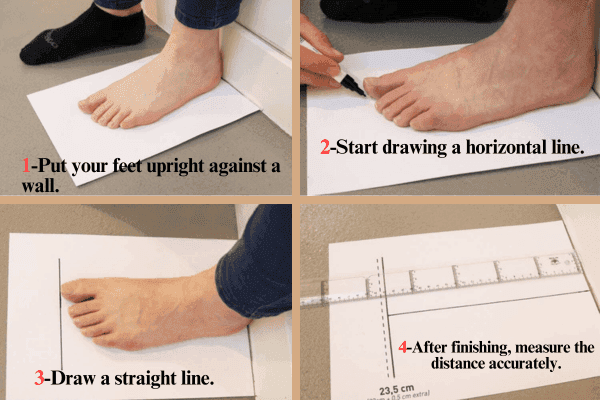
Did you know your feet can change size and shape over time due to aging, pregnancy, weight fluctuations, or injuries? Measuring your feet at least once a year ensures you get the right fit.
Pro Tip: Always measure your feet in the evening when they’re slightly swollen from the day’s activities. This ensures your new shoes won’t feel tight during everyday wear.
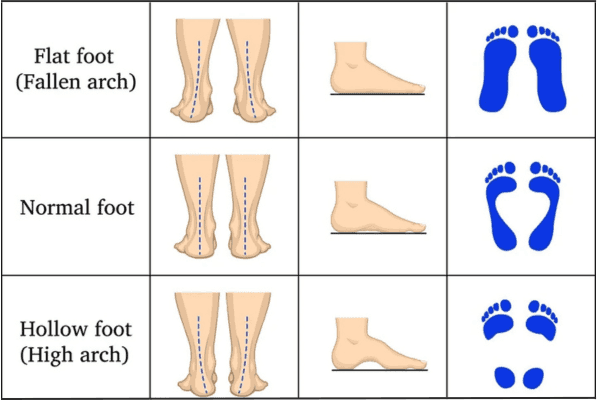
If you suffer from conditions like plantar fasciitis, bunions, or hammertoes, prioritize shoes with the following:
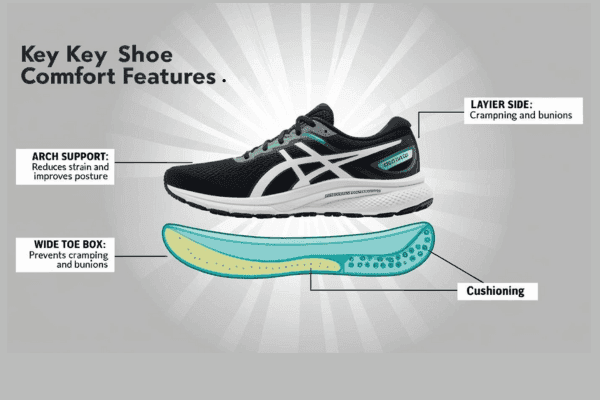
Good arch support reduces foot fatigue and prevents long-term joint issues.
Cramped toes can lead to deformities like hammertoes or nerve pain. Look for shoes with at least ½ inch of space between your longest toe and the front.
Cushioned soles reduce the impact on your joints and prevent issues like plantar fasciitis. Materials like memory foam or gel are excellent for all-day comfort.
Choose shoes made from mesh or lightweight nylon for better air circulation. For wet conditions, opt for waterproof materials like Gore-Tex that keep water out while allowing moisture to escape.
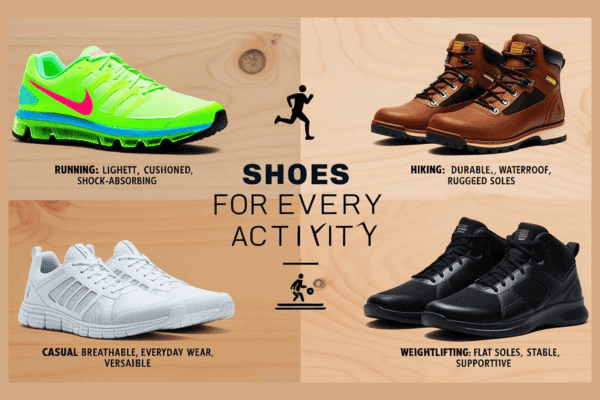
Wearing shoes designed for specific activities can prevent discomfort and injuries. Here’s a breakdown of what to look for:
| Activity | Features to Prioritize |
|---|---|
| Daily Wear | Lightweight, breathable shoes with moderate arch support and slip-resistant outsoles. |
| Work Shoes | Cushioned soles, reinforced heels, and excellent arch support for standing long hours. |
| Running | Ample shock absorption and lightweight materials for joint protection. |
| Walking | Flexible soles with slight curves for natural movement. |
| Weightlifting | Flat, stable soles to improve balance and prevent slipping. |
| Hiking | Depends on the terrain: waterproof boots for wet conditions, and reinforced soles for rocky trails. |
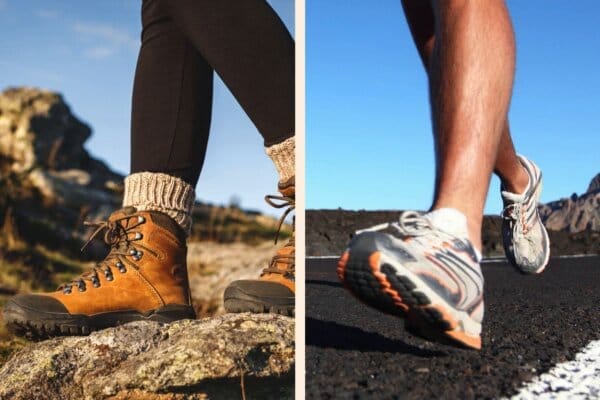
Choosing the right hiking footwear depends on the terrain you’ll be exploring. Each type of trail presents unique challenges, and having the right shoes or boots can make your hike more comfortable and safe. Here’s a breakdown of footwear recommendations based on terrain types:
A proper fit is key to long-term comfort. Shoes should feel snug without pinching or rubbing. Avoid buying shoes that “need breaking in”—comfort should be immediate.
Pointed shoes might look stylish, but they compress toes and can cause deformities over time. Wide-toe shoes, on the other hand, allow your toes to spread naturally.
High heels shift your body weight forward, putting strain on your feet and back. For better comfort, choose lower, chunkier heels under 2 inches.
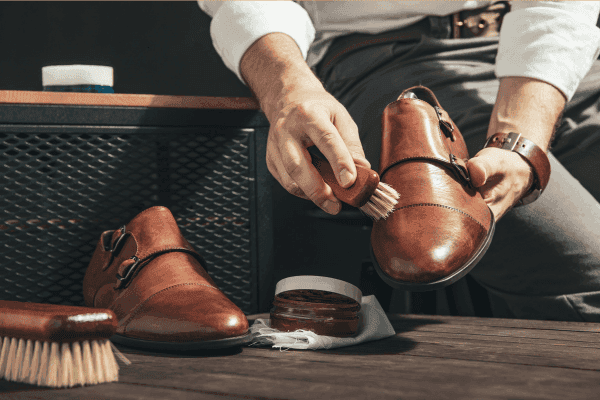
Even the best shoes need proper care to last. Follow these tips to keep your footwear looking and performing like new:
Look out for these signs that it’s time to invest in a new pair:
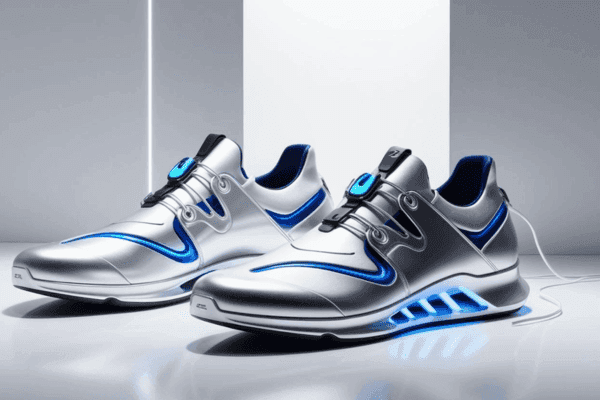
The footwear industry is constantly evolving. Here are some exciting innovations to watch for:
Running or walking shoes should be replaced every 300-500 miles, while casual shoes may last up to a year with regular use.
Yes, especially if you have foot conditions like flat arches or plantar fasciitis. They provide personalized support and comfort.
Wear moisture-wicking socks, and use blister prevention patches or tape on sensitive areas.
Always prioritize comfort. Stylish shoes that hurt your feet can lead to long-term health issues.
If possible, try it on in-store to ensure the right fit. Check the return policy for online shopping if the size doesn’t work.
Wear them for short periods at first and gradually increase usage. Thick socks can help reduce discomfort during the break-in period.
Not necessarily. While premium shoes often use higher-quality materials, many affordable options balance quality and cost.
Consider using a shoe stretcher or taking them to a cobbler for professional stretching.
Test the insole by pressing on it. A good shoe will have firm yet flexible support that doesn’t collapse under pressure.
The answer depends on the material of the shoes. Always check the care instructions provided by the manufacturer. Many athletic shoes are machine washable, ideally at a water temperature not exceeding 30°C. However, delicate materials like leather and suede require gentle hand cleaning to avoid damage.
Choosing the right shoes isn’t just about style—it’s about investing in your health and confidence. By understanding your foot needs, prioritizing comfort features, and considering your lifestyle, you can find the perfect pair to keep you comfortable and pain-free.
Let us know your thoughts or tips for finding the perfect shoes in the comments below!
It’s amazing to visit this web page and reading the views of all mates regarding this post, while I am also keen of getting
experience.
Hey! 😊
Thanks a lot for stopping by and leaving a comment — really appreciate you taking the time to read the post and share your thoughts!
Just a quick heads-up: we’ve removed the link you included, only because we try to keep our comment section focused and safe for everyone. Nothing personal at all — we just want to make sure it stays helpful and on-topic for all readers.
That said, we’d love to hear more from you anytime. Feel free to jump into any other posts or share your experiences — we’re always happy to connect!
Take care,
The Shoeshave Team 👞✨
I loved as much as you’ll receive carried out right
here. The sketch is tasteful, your authored material stylish.
nonetheless, you command got
an shakiness over that you wish be delivering the following.
unwell unquestionably come more formerly again as exactly the same nearly
very often inside case you shield this increase.
Valuable and useful information. I needed such information. I hope you will provide more and expand more in talking about shoe fashion and everything related to it. Thanks to the writer of the article.
Thank you so much for your kind words! 😊
We’re really happy to hear that you found the article helpful. We definitely plan to share more tips, trends, and in-depth guides about shoe fashion and everything related to it—so stay tuned! Your support means a lot. 🙌
—The Shoeshave Team 👞✨